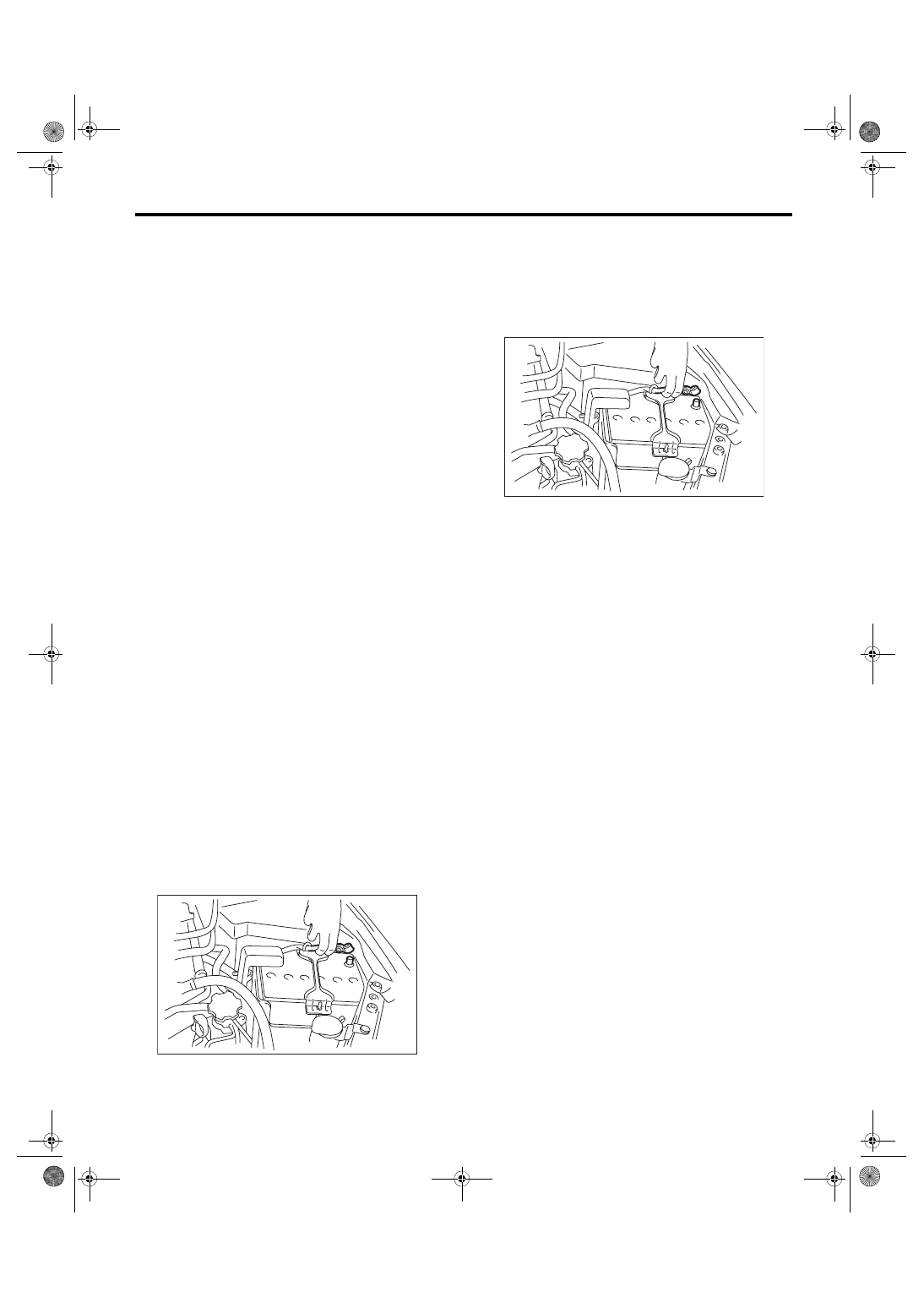Subaru Impreza 3 / Impreza WRX / Impreza WRX STI. Manual - part 65

ME(STI)-22
Ignition Timing
MECHANICAL
4. Ignition Timing
A: INSPECTION
CAUTION:
After warming-up, engine becomes very hot. Be
careful not to burn yourself at measurement.
1. METHOD WITH SUBARU SELECT MON-
ITOR
1) Before checking the ignition timing, check the
following item:
(1) Check the air cleaner element is free from
clogging, spark plugs are in good condition, and
hoses are connected properly.
(2) Check the malfunction indicator light does
not illuminate.
2) Warm up the engine.
3) Read the ignition timing using Subaru Select
Monitor. <Ref. to EN(H4DOTC)(diag)-41, READ
CURRENT DATA FOR ENGINE (NORMAL
MODE), OPERATION, Subaru Select Monitor.>
NOTE:
If ignition timing is out of standard, check the igni-
tion control system. Refer to “Engine Control Sys-
tem”. <Ref. to EN(H4DOTC)(diag)-2, Basic
Diagnostic Procedure.>
Ignition timing [BTDC/rpm]:
Standard
15°
±
10°/700
2. METHOD WITH TIMING LIGHT
1) Before checking the ignition timing, check the
following item:
(1) Check the air cleaner element is free from
clogging, spark plugs are in good condition, and
hoses are connected properly.
(2) Check the malfunction indicator light does
not illuminate.
2) Warm up the engine.
3) Stop the engine, and turn the ignition switch to
OFF.
4) Disconnect the ground cable from battery.
5) Remove the air intake duct. <Ref. to IN(STI)-10,
6) Remove the air cleaner case. <Ref. to IN(STI)-8,
7) Connect the timing light to the power wire of #1
ignition coil.
8) Install the air cleaner case. <Ref. to IN(STI)-8,
INSTALLATION, Air Cleaner Case.>
9) Connect the battery ground terminal.
10) Start the engine, turn the timing light to the
crank pulley, and check the ignition timing through
the timing belt cover gauge.
NOTE:
If ignition timing is out of standard, check the igni-
tion control system. Refer to “Engine Control Sys-
tem”. <Ref. to EN(H4DOTC)(diag)-2, Basic
Diagnostic Procedure.>
Ignition timing [BTDC/rpm]:
Standard
15°
±
10°/700
11) After inspection, install the related parts in the
reverse order of removal.
IN-00203
IN-00203